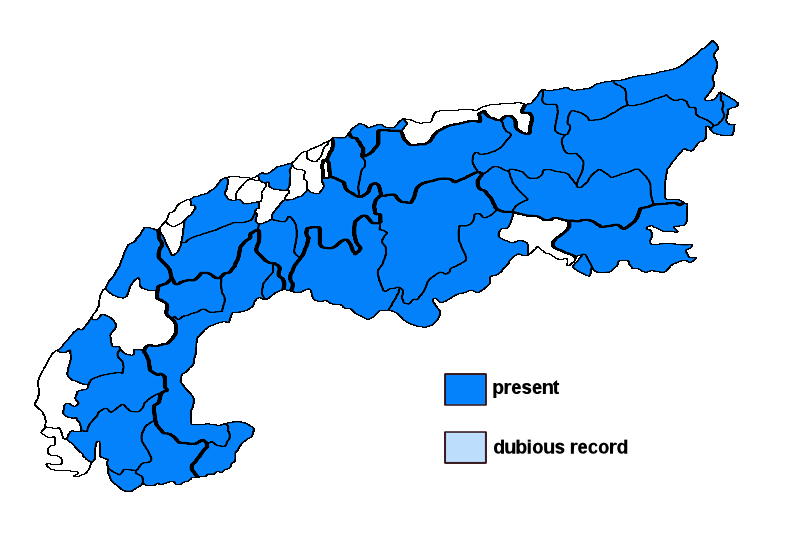Vahliella leucophaea (Vahl) P.M. Jørg.
Syn.: Fuscopannaria leucophaea (Vahl) P.M. Jørg., Lecidea microphylla (Lilj.) Ach., Lichen leucophaeus Vahl, Massalongia cheilea Mudd, Pannaria austriaca Zahlbr., Pannaria cheilea (Mudd) Leight., Pannaria leucophaea (Vahl) P.M. Jørg., Pannaria microphylla (Lilj.) Delise ex Bory, Pannularia microphylla (Lilj.) Stizenb., Parmeliella microphylla (Lilj.) Müll. Arg., Parmeliella pseudocraspedia (Hazsl.) Gyeln.
Lichenised.
Substrate: siliceous rocks, intermediate rocks (such as calciferous schists)
Altitudinal range: from the submediterranean/colline belt (potential vegetation: mixed deciduous forests dominated by Quercus and Carpinus) to the alpine belt (potential vegetation: treeless Alpine grasslands and tundras, to the lower limit of perennial snow and the equilibrium line of glaciers)
Note: on basic siliceous rocks in sheltered and humid situations, such as in seepage tracks; widespread throughout the Alps.
Austria: Vorarlberg; Tirol; Salzburg; Kärnten; Steiermark; Oberösterreich; Niederösterreich (incl. Wien); Burgenland; Germany: Schwaben; Switzerland: Bern; Graubünden; Schwyz; Ticino; Valais; France: Alpes-de-Haute-Provence; Haute-Alpes; Alpes-Maritimes; Isère; Haute-Savoie; Var; Italy: Veneto; Trentino Alto Adige; Lombardia; Piemonte; Valle d'Aosta; Liguria; Slovenia: Alpine and Pre-Alpine Slovenia; Trnovsky Gozd;





